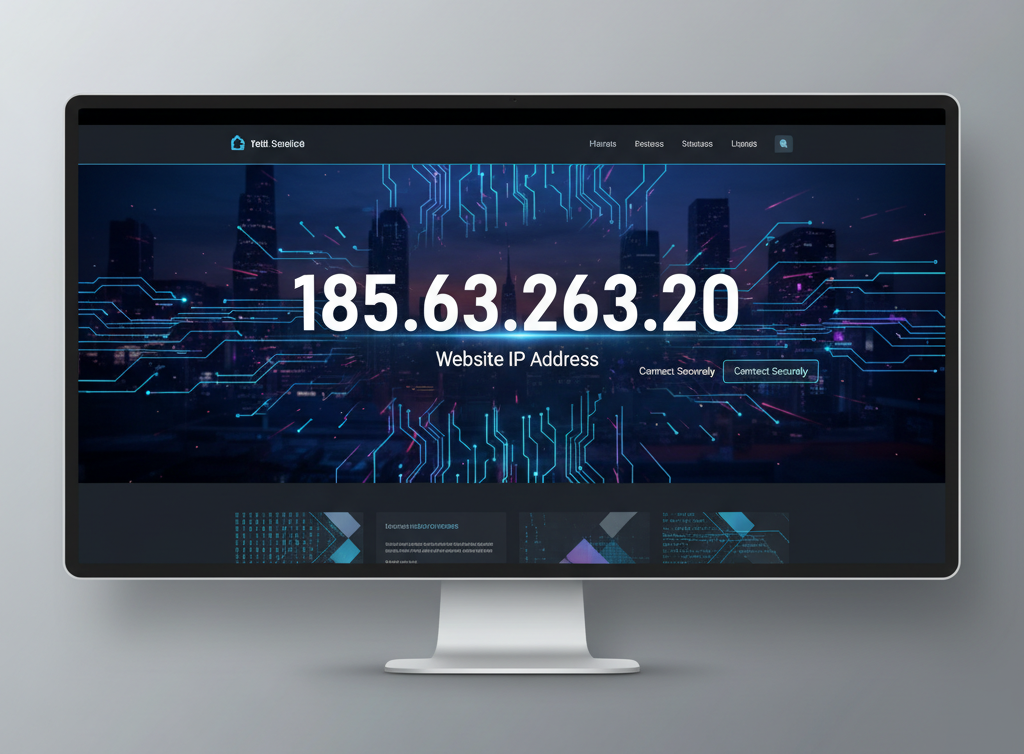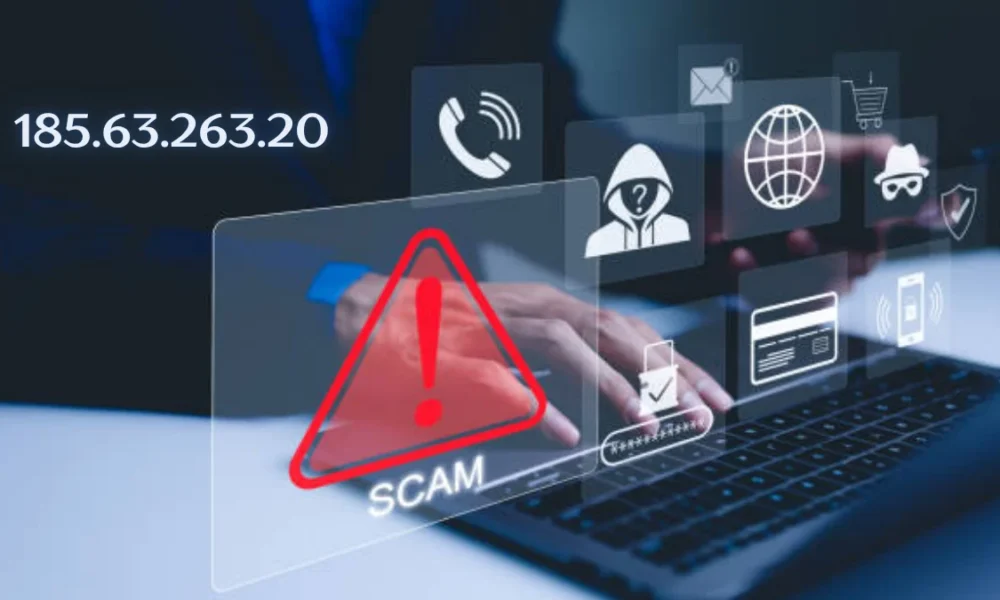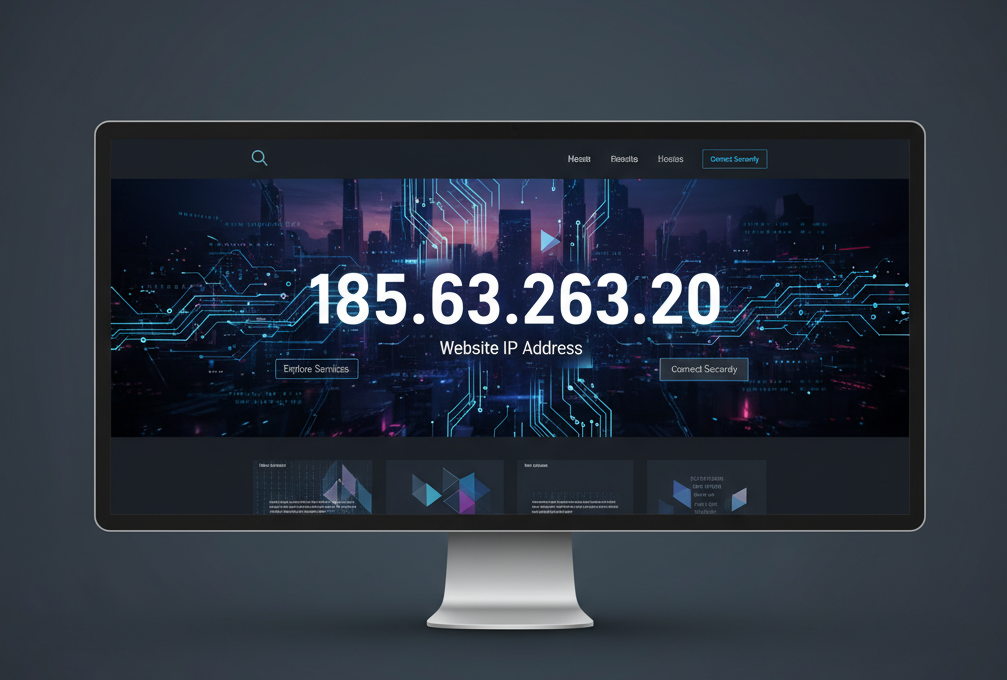If you’ve ever come across the IP address 185.63.263.20 while browsing the internet or checking your network logs, you might wonder what it means or why it appears. Don’t worry — you’re not alone. Many users see unfamiliar IP addresses and immediately assume something suspicious. In this guide, we’ll break down everything about 185.63.263.20 — what it is, what it’s used for, whether it’s safe, and how to identify where it’s coming from. By the end, you’ll clearly understand how to manage such IPs and protect your digital privacy.
What Is 185.63.263.20?
The IP address 185.63.263.20 is a public IPv4 address often detected by users in server logs, routers, and website analytics. An IP (Internet Protocol) address functions as a digital identifier that allows devices to communicate across the web.
The number itself (185.63.263.20) follows the IPv4 format, which consists of four numerical blocks separated by dots. Each block can range between 0 and 255, representing a part of your device’s unique network identity.
While it looks random, every IP is actually assigned by a Regional Internet Registry (RIR) to internet service providers, companies, or hosting platforms.
Breaking Down the IP: 185.63.263.20
Let’s understand what this IP might represent:
- 185 – Represents the first block of the address, typically denoting a European or Middle Eastern region under RIPE NCC.
- 63 – Refers to the network segment within the regional allocation.
- 263.20 – Represents the host part of the IP — the specific device or endpoint connected to the network.
So when you see 185.63.263.20, it likely belongs to a server, proxy, or hosting provider operating in Europe.
Is 185.63.263.20 a Real IP Address?
Here’s the tricky part: the IP 185.63.263.20 contains “263”, which is not a valid octet in the IPv4 format. Each section must be between 0 and 255, so technically, 185.63.263.20 is not a valid IP address.
That’s why when you try to access it in your browser, you’ll see an error or timeout. Some users encounter such invalid IPs due to typos, scanning tools, bots, or misconfigured systems that incorrectly log addresses.

Why You Might See 185.63.263.20 in Logs
Even though it’s not valid, many users report seeing this IP appear in:
- Server access logs
- Firewall logs
- Website analytics
- Email headers
- Security scanners
Here are a few common explanations:
- Bot or crawler activity: Some automated scripts generate malformed IPs while scanning websites.
- DNS errors: A domain name might resolve incorrectly, creating invalid address entries.
- Fake or spoofed entries: Attackers sometimes insert fake IPs to hide their origin or confuse log analysis.
- Misconfigured software: Applications or plugins may produce invalid addresses when they fail to parse valid IPs.
185.63.263.20 and Cybersecurity Concerns
Seeing strange IPs like 185.63.263.20 can be concerning, especially if you manage a business website or network. However, it doesn’t always mean you’re being targeted. Still, understanding the cybersecurity aspect is crucial.
1. Fake or Spoofed IPs
Hackers sometimes use fake IP addresses to mask their activities. This tactic — called IP spoofing — tricks your systems into thinking traffic comes from a harmless source.
2. Suspicious Network Pings
If your firewall logs show multiple connection attempts from 185.63.263.20, even though it’s invalid, it could be a bot scanning attempt or data-scraping activity.
3. Log Pollution
Fake IPs can flood your logs, making it difficult to identify real threats. This tactic is used in denial-of-service (DoS) scenarios to overload systems.
How to Check the Origin of IPs Like 185.63.263.20
While this one is invalid, it’s still good practice to know how to analyze IPs.
1. Use Online IP Lookup Tools
Platforms like “WhatIsMyIPAddress” or “IPinfo” allow you to check IP locations, ISPs, and reputation scores.
If the IP is valid, you’ll see country, city, and organization data.
2. Analyze Logs with Filters
Filter your logs to identify which application or endpoint logged 185.63.263.20. This helps pinpoint misconfigurations.
3. Check Reverse DNS Records
Reverse DNS lookups map IPs to domain names. Invalid or missing reverse entries can indicate spoofed or misconfigured IPs.
4. Use Security Scanners
Run a vulnerability scan using trusted tools to ensure no hidden connections or bot entries exist in your network.
Is 185.63.263.20 Dangerous?
Not directly. Because it’s invalid, it doesn’t correspond to an actual device or location. However, if it appears repeatedly in your logs, it might indicate:
- A botnet scan attempting to probe your server
- A log injection attempt
- Malfunctioning monitoring software
- Incorrect DNS resolution
So, while 185.63.263.20 itself isn’t harmful, its presence can signal poor input validation or potential probing activity.
Common Misunderstandings About 185.63.263.20
| Misconception | Reality |
|---|---|
| It’s a hacker’s IP | No, it’s invalid and likely spoofed |
| It’s from a known country | Invalid IPs have no geographical mapping |
| It’s safe to ignore | Not always — repeated logs can reveal deeper issues |
| It’s part of malware | Not inherently, but fake IPs are often used in malicious activity |

What to Do If You See 185.63.263.20 Frequently
If you repeatedly find 185.63.263.20 appearing in your system logs, follow these simple steps:
- Update your firewall rules to block malformed IPs.
- Inspect plugins or scripts on your website — one might be generating invalid log entries.
- Use intrusion detection software to identify unusual access patterns.
- Clear and monitor logs regularly to detect repeated patterns.
- Verify DNS records to ensure no misconfigurations are creating phantom IPs.
Understanding IP Address Validatio
IPv4 addresses consist of four octets (each between 0–255).
For example:
✅ Valid: 185.63.23.20
❌ Invalid: 185.63.263.20
Any value above 255 invalidates the entire address. That’s why when you ping or trace 185.63.263.20, you’ll get “destination unreachable” or “invalid IP” errors.
IPv4 vs IPv6: A Quick Refresher
Since IPs like 185.63.263.20 are malformed, it’s also worth knowing the newer IP version — IPv6, which was introduced to overcome the shortage of IPv4 addresses.
| Type | Example | Address Length | Purpose |
|---|---|---|---|
| IPv4 | 192.168.1.1 | 32-bit | Standard internet communication |
| IPv6 | 2001:0db8:85a3::8a2e:0370:7334 | 128-bit | Supports billions of devices |
IPv6 avoids format limitations, but even there, invalid entries can occur if systems are misconfigured.
How Invalid IPs Affect Network Logs
Invalid IPs like 185.63.263.20 might:
- Confuse log parsers
- Cause monitoring systems to flag false positives
- Interfere with intrusion detection systems
- Lead to inaccurate analytics reports
That’s why network administrators should implement input sanitization to reject malformed IPs early in the log pipeline.
Tips to Protect Your Network from Fake IP Entries
- Enable IP validation filters in your web server configuration.
- Deploy firewall rules to block invalid IP ranges.
- Monitor unusual traffic patterns using analytics tools.
- Educate your team about spoofed IPs and their risks.
- Regularly audit all inbound and outbound connections.
Advanced: Detecting and Filtering Invalid IPs
If you manage large-scale servers, you can use regular expressions to identify and filter invalid IPs:
^(?:(?:25[0-5]|2[0-4][0-9]|[01]?[0-9][0-9]?)\.){3}(?:25[0-5]|2[0-4][0-9]|[01]?[0-9][0-9]?)$
This ensures that only valid IPv4 addresses pass through your filters.
Why Fake IPs Exist in the First Place
The appearance of invalid IPs like 185.63.263.20 can be attributed to:
- Automated scanning tools
- Data collection bots
- Typographical errors
- DNS spoofing attacks
- Improper coding in network applications
In most cases, they’re harmless. But repeated appearances might warrant deeper investigation.
Summary: Key Takeaways
- 185.63.263.20 is not a valid IP address — the “263” makes it invalid.
- It may appear in logs due to bots, spoofing, or misconfigurations.
- It’s not inherently dangerous, but repeated occurrences should be checked.
- Use validation filters, firewalls, and monitoring tools to stay safe.
- Always remember: not every strange IP means a hacker — sometimes, it’s just a data glitch.
FAQs
Is 185.63.263.20 a real IP?
No. The third octet “263” is outside the valid IPv4 range (0–255), making it invalid.
Why do I see 185.63.263.20 in my logs?
It could be a result of bots, network scanning tools, or misconfigured applications generating invalid entries.
Should I block 185.63.263.20?
Yes, it’s safe to block malformed IPs using your firewall or web server filters.
Can 185.63.263.20 harm my computer?
Not directly. But repeated invalid traffic may indicate that your system is being scanned or probed.
How can I prevent invalid IP entries?
By enabling IP validation, updating your firewall, and using intrusion detection software.
Conclusion
Encountering a mysterious IP like 185.63.263.20 might seem alarming, but once you understand what’s happening, it’s usually nothing to fear. The key is awareness — knowing how IPs work, how to verify them, and how to protect your systems. Invalid or spoofed IPs are a normal part of internet background noise. However, a well-secured system with proper logging and validation practices ensures you stay safe, secure, and in control.
